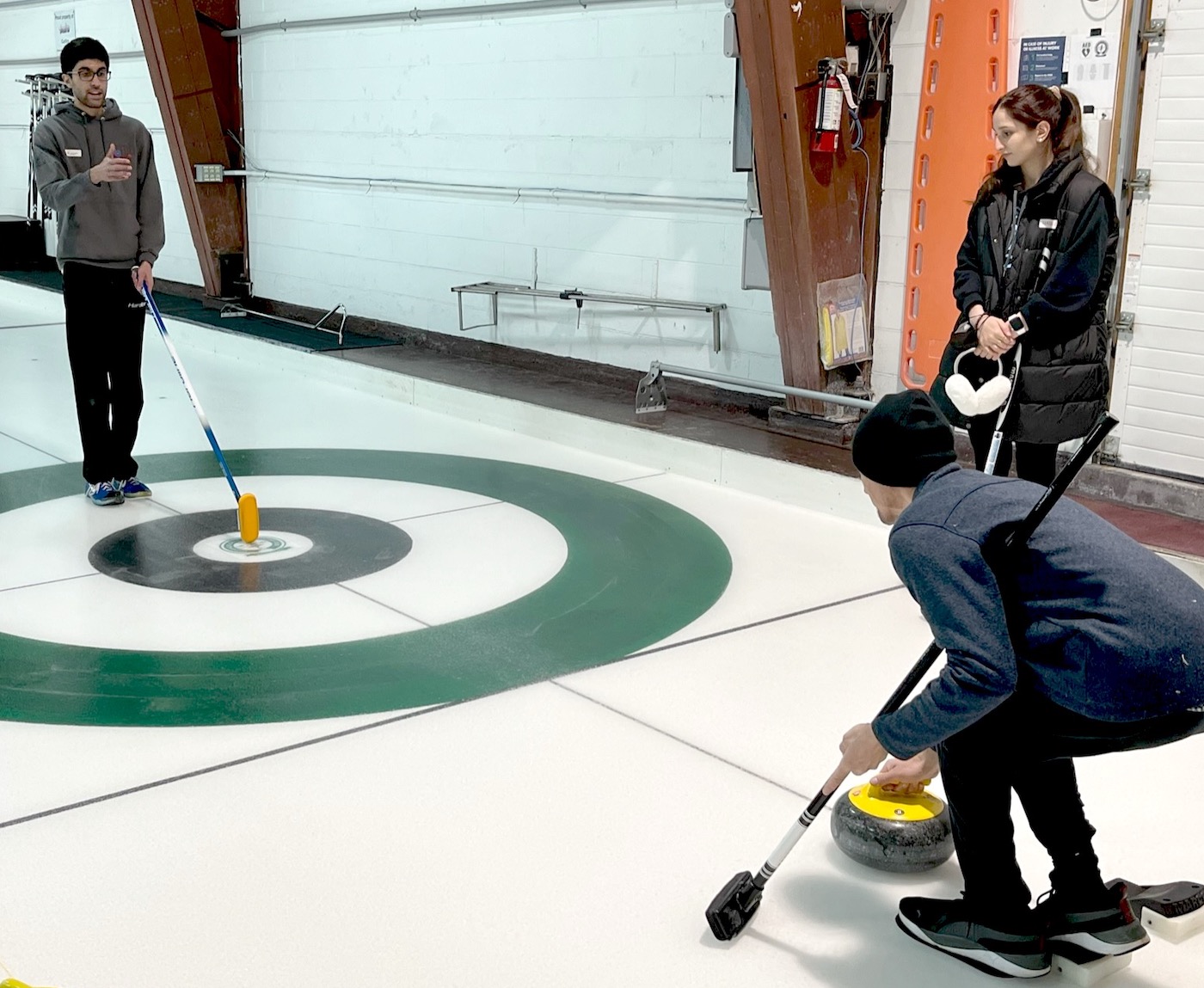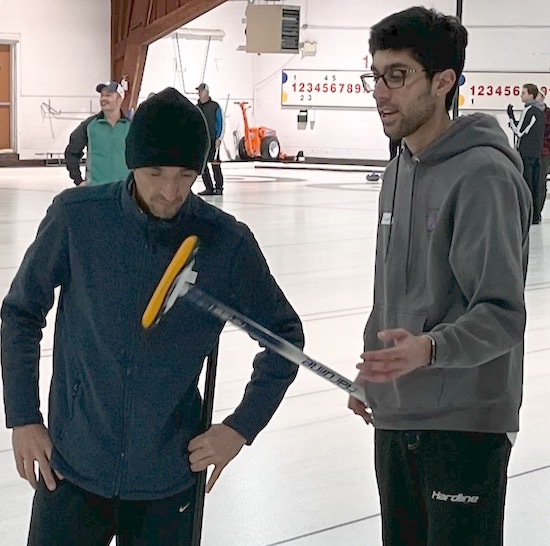Normalizing Diversity & Inclusion

Kaamraan Islam Uses Grant Money to Create BIR Learn to Curl League
By JILLIAN KENT
Following the announcement of the winners of the All Heart Junior Curling Awards, we have featured several stories of those winners, highlighting what each recipient has done or intends to do with the money they were awarded to further diversity and inclusion in their local clubs. As we turn our attention to Kaamraan Islam, and Cataraqui Golf and Country Club in Kingston, Ont., you can remind yourself of Wil Robertson and Ashleigh McKinnon’s stories here and here.
In February 2022, Kaamraan’s mother, Sabena Islam, launched a learn to curl program for Black, Indigenous and racialized (BIR) youth. Through this program, 39 racialized youth were introduced to curling and it continues to run today with a similar, if not larger size, to Cataraqui’s existing junior program.
“My mom has been a huge inspiration for me throughout my life,” Kaamraan stated. “[She has] emphasized the importance of equity and inclusion both verbally and through her actions in the curling community and society at large.”
Kaamraan, who has been involved with curling on and off for 13 years, was honoured to be an instructor in this BIR Youth program. It was through getting to know these children, and the various ways they took to curling, that Kaamraan realized the importance of tailoring teaching to each individual.
“It is important to recognize that individuals, and especially youth, are heterogenous. In this case, responses from youth in this program have been heterogenous. Some youth are extremely passionate about curling, are interested in the game, and have a huge smile the whole time they are on the ice. Others may be interested in curling, but also enjoy how the program serves as a social opportunity to make new friends. [Finally] like any other sport, some youth may be participating because their parents have an interest in curling.”

This realization helped shape how he responded when he saw that there was equal interest from the parents involved in the BIR youth program. This, combined with his own personal experience as a racialized curler, prompted Kaamraan to create an action plan for a BIR Adult Learn to Curl, which he submitted to the All Heart Junior Curling Award nomination committee.
“It is very hard to see yourself playing a sport when there are very few people that look like you in the sport.” Kaamraan draws this conclusion from personal experience; having travelled to many clubs through Ontario’s competitive circuit, he found that he was one of the few racialized curlers in the province. His program, feeding off the one created by his mother, was a step that he could take to overcome the barriers, both seen and unseen, that keep BIR individuals from entering curling-centred spaces.
To help increase the number of potential new curlers, the BIR Learn to Curl program will be split into two identical clinics (A and B) with 12 spots available in each. Both clinics will run for four weeks.
Thus far, interest has been high, with clinic A filling up prior to start (three members had to drop out afterwards, due to health or scheduling issues), and more than half the spots in clinic B already spoken for. Furthermore, every curler who filled out anonymous feedback forms has indicated that they would like to register for leagues next year.
Engagement has been excellent as well; clinic A has seen a strong response with enthusiastic participation on the ice, and members remaining afterwards to engage in the social aspect. Kaamraan has ensured that off-ice socializing is integrated as part of the curling experience by providing complimentary appetizers to the participants after each session.
“My vision for this program is that participants who are interested in curling next season form teams together,” said Kaamraan. “Forming a team with other racialized individuals can help create a sense of comfort and community, both of which are important when beginning your curling journey in new, unfamiliar, and perhaps unwelcoming environments.”
It’s Kaamraan’s hope that this program initiates a dialogue about the current state of curling, creating a more welcoming space and normalizing racialized individuals in the realm of curling. Unfortunately, the demographics in nearly all curling clubs today do not reflect the demographics within Canada itself.
The reason for this disparity could be found, in part, through the comments Kaamraan has heard from participants such as: “I would never have been in a country club if it weren’t for this program”, “I would have never tried curling if this program didn’t exist” and “Curling is a sport for affluent people”. It’s these systemic barriers that inclusive programming, and open discussions on racialization in curling and beyond strive to eliminate.
Kaamraan’s feelings that it is unfortunate that these programs are necessary and that they reflect a problem we need to work to correct, are shared by many. However, it is his hope that the BIR Learn to Curl and similar programs will work to normalize inclusion and racialized individuals in these spaces.
“This program serves to normalize intercultural and interracial interactions. Hopefully this will increase knowledge transfer and ultimately acceptance between racialized communities and the curling community. On a larger scale, each individual that becomes more knowledgeable about racialized communities is one step towards society achieving racial equity.”
The truth is that curling, as a sport and a community, only suffers by creating obstacles that exclude some members of our society. There is a wealth of untapped potential, eager participants, and innovative ideas that can only serve to grow curling nationally if the curling community reaches out to marginalized groups. With conscious decisions to initiate conversations, increase awareness and education, and eliminate divisions, we can only grow — together.




